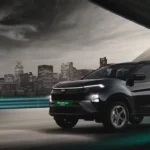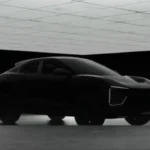E-Scooters have gradually gained momentum in India as the world shifts towards cleaner and more efficient ways of mobility. Today, E2Ws can be considered to be spearheading this transportation revolution. India has considered E2Ws as a viable option because of rising fuel prices, worsening urban congestion, and environmental fears.
Amitabh Kant, former CEO, NITI Aayog avers, “India has the capability to hold leadership position in the global electric mobility revolution. Our manufacturers should be focused on innovation and scale globally for them to take an early position in this space.”
Rise of E-Scooters in India
In the last two years, growth in the electric two-wheeler market has been explosive. By the data, E2Ws’ market share in India has increased from a slight 0.3% during FY 2020-21 to a healthy 5.4% in FY 2023-24. As per analysts, E2Ws are likely to capture 13% of the two-wheeler market by FY 2026-27.
These key drivers include government incentives under FAME II (Faster Adoption and Manufacturing of Hybrid and Electric Vehicles). Just-announced PM E-DRIVE allocated some significant ₹10,900 crores towards electric mobility in the next two years. There’s definitely a strong push for cleaner transportation, that makes this country streamline its carbon emissions and encourage sustainable development.
Shailesh Chandra, President, SIAM Says, “The Indian market is value-driven. It is all about affordability and practicality. That drives the adoption of electric vehicles. Ultimately, only companies that innovate with costs kept low will win the market.”
Cost, Convenience, Sustainability
Unlike the Western world, luxury and premium here mostly come as a secondary aspect for an Indian customer. They prefer cost-effectiveness along with ease of usage. As regards to the increasing fuel prices and raising concerns toward pollution, this demand for electric two-wheelers is gradually growing.
According to a new report, one in every three intending buyers of a two-wheeler in the country are now found looking for an electric vehicle. The low operational cost, low emissions, and the incentives offered by the government are its attractions.
Barriers in E-Scooters Revolution
Even though the E2W market is growing sharply, pitfalls also exist. Cut in subsidies from the government is the biggest pitfall recently. Market share swung into volatility of the leading manufacturers. Ola Electric lost the market share by 49% down to 29%, while Bajaj and TVS gain pace among other competitors. To take the momentum of growth forward, the government support should be consistent and the industry should work co-operatively synergistic action.
“Opportunities galore ahead of the electric two-wheelers in India.” According to Nitin Gadkari, Minister of Road Transport and Highways, “We need an integrated ecosystem from manufacturing to charging infrastructure.”
Some of the states, such as Delhi and Maharashtra, are investing in charging infrastructure, thereby reducing and eventually eliminating range anxiety. Consumer adoption can then be expected to come into maturity because of continued manufacturer’s efforts in innovation.
BHUSHAN PUNIA, Global Business Head at Ola Electric, said: “The vision is to make electric a first choice for the customer. Electric two-wheelers must become the default option rather than an alternate choice of daily commutes. Our focus is on enhancing the user experience and delivering better performance at competitive prices.”
ELCTRIK Speaks
Electric two-wheelers are going to transform the face of transport in India. Firm government support, innovative manufacturers, and an ever-increasing consumer base have enabled E2Ws to be the cleanest, most efficient, and most affordable solution for the mobility needs of the country. It is full of opportunity for manufacturers, policymakers, and consumers, and the future of electric two-wheelers in India has never seemed brighter.







